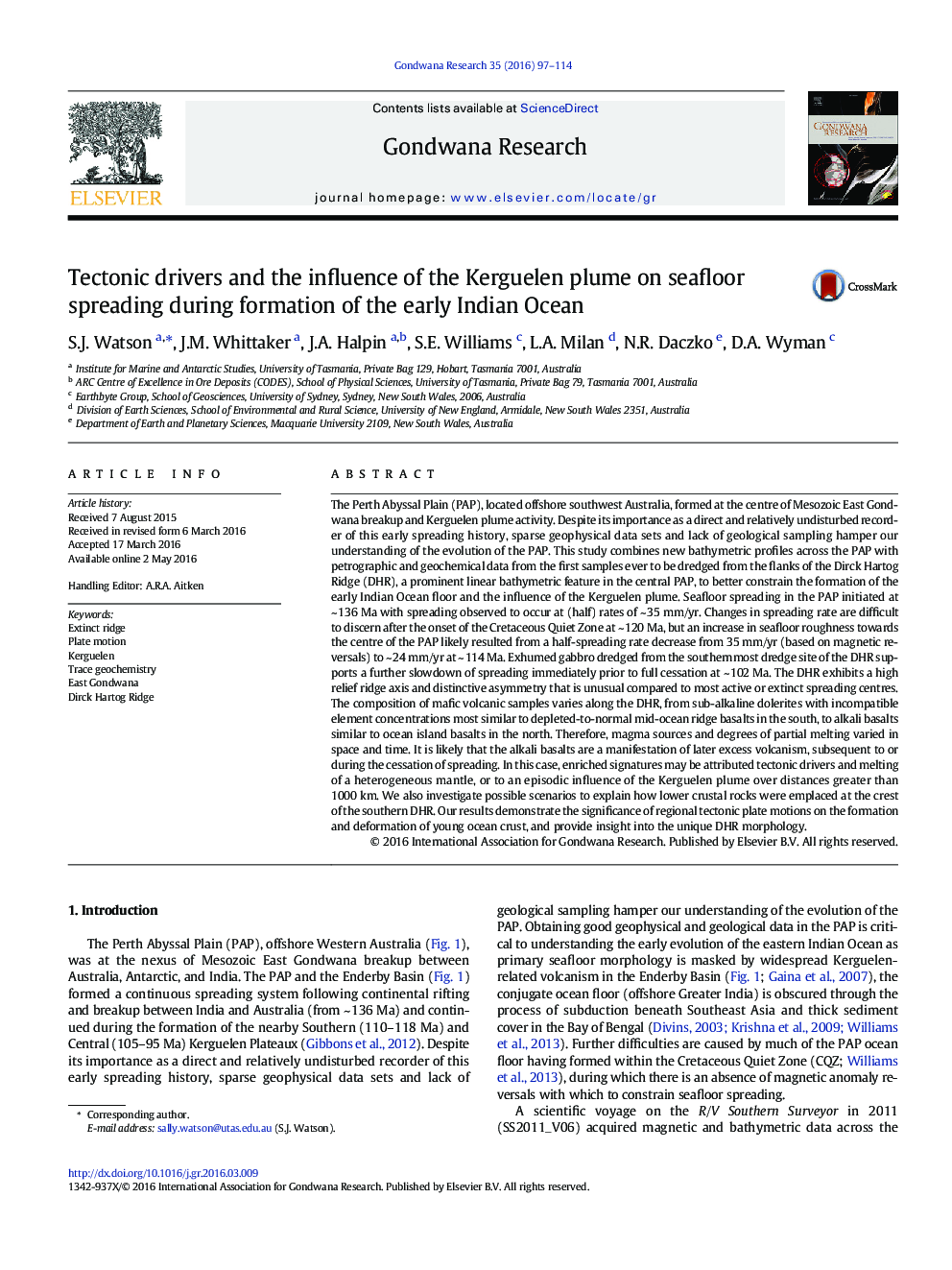| کد مقاله | کد نشریه | سال انتشار | مقاله انگلیسی | نسخه تمام متن |
|---|---|---|---|---|
| 4726590 | 1640136 | 2016 | 18 صفحه PDF | دانلود رایگان |
• We present the first ever samples from the Dirck Hartog Ridge.
• Source, depth, and degree of melting varies in time and space.
• Implications for early East Gondwana separation.
• Rough abyssal floor and gabbro exhumation indicative of a slowdown in spreading.
• Unusual asymmetrical relief of the DHR suggests late stage compressional event.
The Perth Abyssal Plain (PAP), located offshore southwest Australia, formed at the centre of Mesozoic East Gondwana breakup and Kerguelen plume activity. Despite its importance as a direct and relatively undisturbed recorder of this early spreading history, sparse geophysical data sets and lack of geological sampling hamper our understanding of the evolution of the PAP. This study combines new bathymetric profiles across the PAP with petrographic and geochemical data from the first samples ever to be dredged from the flanks of the Dirck Hartog Ridge (DHR), a prominent linear bathymetric feature in the central PAP, to better constrain the formation of the early Indian Ocean floor and the influence of the Kerguelen plume. Seafloor spreading in the PAP initiated at ~ 136 Ma with spreading observed to occur at (half) rates of ~ 35 mm/yr. Changes in spreading rate are difficult to discern after the onset of the Cretaceous Quiet Zone at ~ 120 Ma, but an increase in seafloor roughness towards the centre of the PAP likely resulted from a half-spreading rate decrease from 35 mm/yr (based on magnetic reversals) to ~ 24 mm/yr at ~ 114 Ma. Exhumed gabbro dredged from the southernmost dredge site of the DHR supports a further slowdown of spreading immediately prior to full cessation at ~ 102 Ma. The DHR exhibits a high relief ridge axis and distinctive asymmetry that is unusual compared to most active or extinct spreading centres. The composition of mafic volcanic samples varies along the DHR, from sub-alkaline dolerites with incompatible element concentrations most similar to depleted-to-normal mid-ocean ridge basalts in the south, to alkali basalts similar to ocean island basalts in the north. Therefore, magma sources and degrees of partial melting varied in space and time. It is likely that the alkali basalts are a manifestation of later excess volcanism, subsequent to or during the cessation of spreading. In this case, enriched signatures may be attributed tectonic drivers and melting of a heterogeneous mantle, or to an episodic influence of the Kerguelen plume over distances greater than 1000 km. We also investigate possible scenarios to explain how lower crustal rocks were emplaced at the crest of the southern DHR. Our results demonstrate the significance of regional tectonic plate motions on the formation and deformation of young ocean crust, and provide insight into the unique DHR morphology.
Figure optionsDownload as PowerPoint slide
Journal: Gondwana Research - Volume 35, July 2016, Pages 97–114
